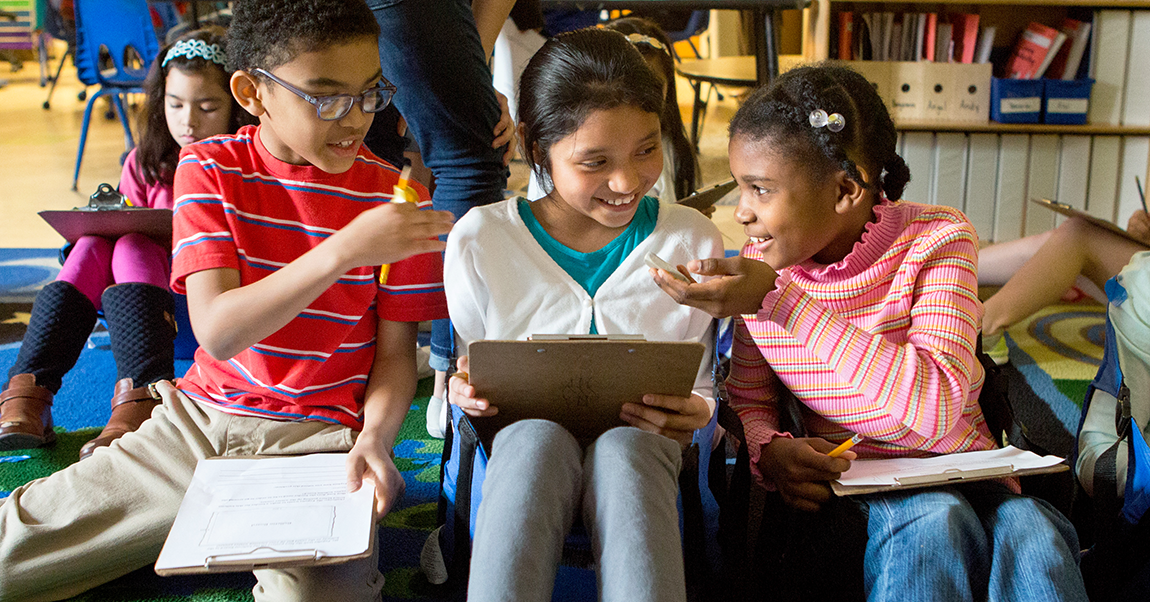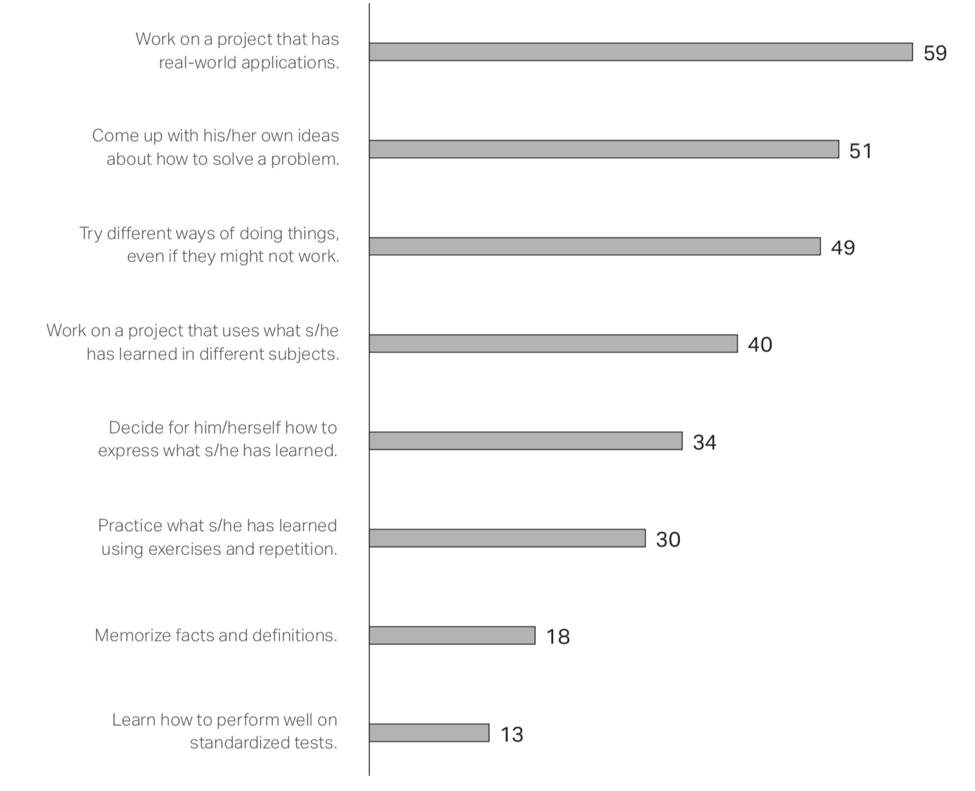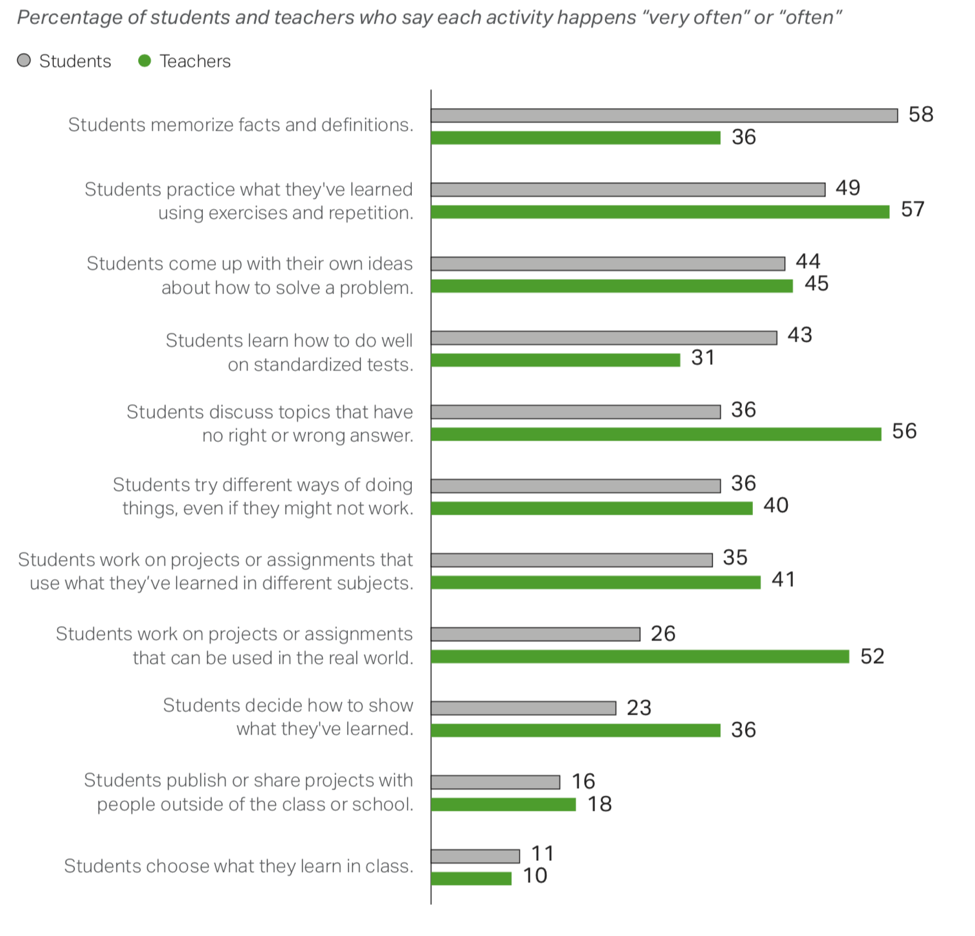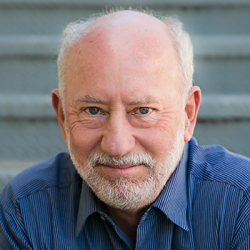
There’s so much good news in this report for supporters of PBL that I hardly know where to begin.
The Gallup report Creativity in Learning is based on a survey conducted in 2019 as a “nationally representative study” of teachers, students, and parents of students. The focus was the extent to which “creativity in learning” is being fostered in American classrooms, what respondents think of it, and how technology supports it. Project Based Learning is cited throughout the report.
I could quote long passages, but there are too many good choices; I’d advise you to read the whole report. It’s brief, well-written, easily digestible, and packed with data. I’ll pull out some nuggets about teacher, student, and parent support for PBL.
Teachers and parents value the learning outcomes gained from PBL more than standardized test scores.
“Teachers who often assign creative, project-based activities are more likely than other teachers to say their students display a range of learning and development goals, including building self-confidence, utilizing their unique strengths, and developing critical thinking and problem-solving skills.”
“68% percent of teachers say project-based assignments are a good measure of student learning, far more than the 12% at who say the same about standardized tests.”
When asked what they believe are the most important learning outcomes, the top three choices were:
- “learning to think critically” (chosen by 64% of parents and teachers)
- “problem-solving skills” (chosen by 51% of teachers; not asked of parents)
- “developing students' curiosity to learn beyond the classroom” (chosen by 36% of parents and 41% of teachers)
Also highly ranked were “how to collaborate with others,” “self-discipline,” “having learning experiences that are personally meaningful,” and “building self-confidence.”
All of the above are gained through PBL.
Lowest on the list? “Scoring well on standardized tests” at 4% of parents and 1% of teachers.
Parents want their child to have learning experiences like what happens in PBL.
Take a look at this chart from the report, showing how the learning experiences were ranked, with the percentage of parents who say it’s ”very important.”

Students want the kind of learning experiences that PBL delivers.
According to Gallup,
“Most students say they would like to spend more time on activities that give them input on their educational path, such as choosing what they learn in class and learning more about topics that most interest them.
“Two other activities a majority of students would like to spend more time on to help them see how what they are learning relates to real-life problems outside the classroom are 1) working on projects that can be used in the real world, and 2) publishing or sharing projects with people outside their class or school.”
Worth noting too is that, when asked how much time they spend on various school activities, a majority of students said “too little” about all of the above. Which leads me to another interesting finding from the survey.
Students and teachers do not always agree on how much time is spent on various activities.
Here’s another quote that highlights an interesting disconnect between how students and teachers view the work students do in school:
“Although memorization and repetition are important, this study demonstrates an undue concentration on these processes. A majority of students would like to spend more time on activities that help them see how their learning relates to real-life problems outside the classroom. However, only 26% of students say they often work on projects with real-world applications. Fifty-two percent of teachers say students often work on such projects, suggesting teachers’ perceptions don’t match those of students."
It looks like either students aren’t seeing how assignments relate to “real-life” issues and problems, or teachers think their assignments are more real-world-related than they really are. So it could be a communication or definition problem, but it’s also the case, I suspect, that many projects teachers design are not as authentic as they could be. That’s why we emphasize the Essential Project Design Element “Authenticity” so much in our workshops and writing.
Here’s the full chart showing what students and teachers report about the frequency of various learning activities:

The report also states, as its 5th major finding, that teachers need “A supportive and collaborative culture, training, and autonomy to try new things.”
This emphasizes what we know at PBLWorks and devote much of our energy towards—school and district leaders need to create the conditions that support the use of PBL by teachers. As the report says:
“Teachers are more likely to focus on creativity if they feel that school leaders and parents support their efforts.”
And here’s a comment that reminds us of the urgency of our work in building and sustaining the use of Project Based Learning:
“This research establishes the need to scale the number of students who learn in personalized ways to become creative problem-solvers of tomorrow.”
I encourage you to read and discuss this useful and user-friendly report!

